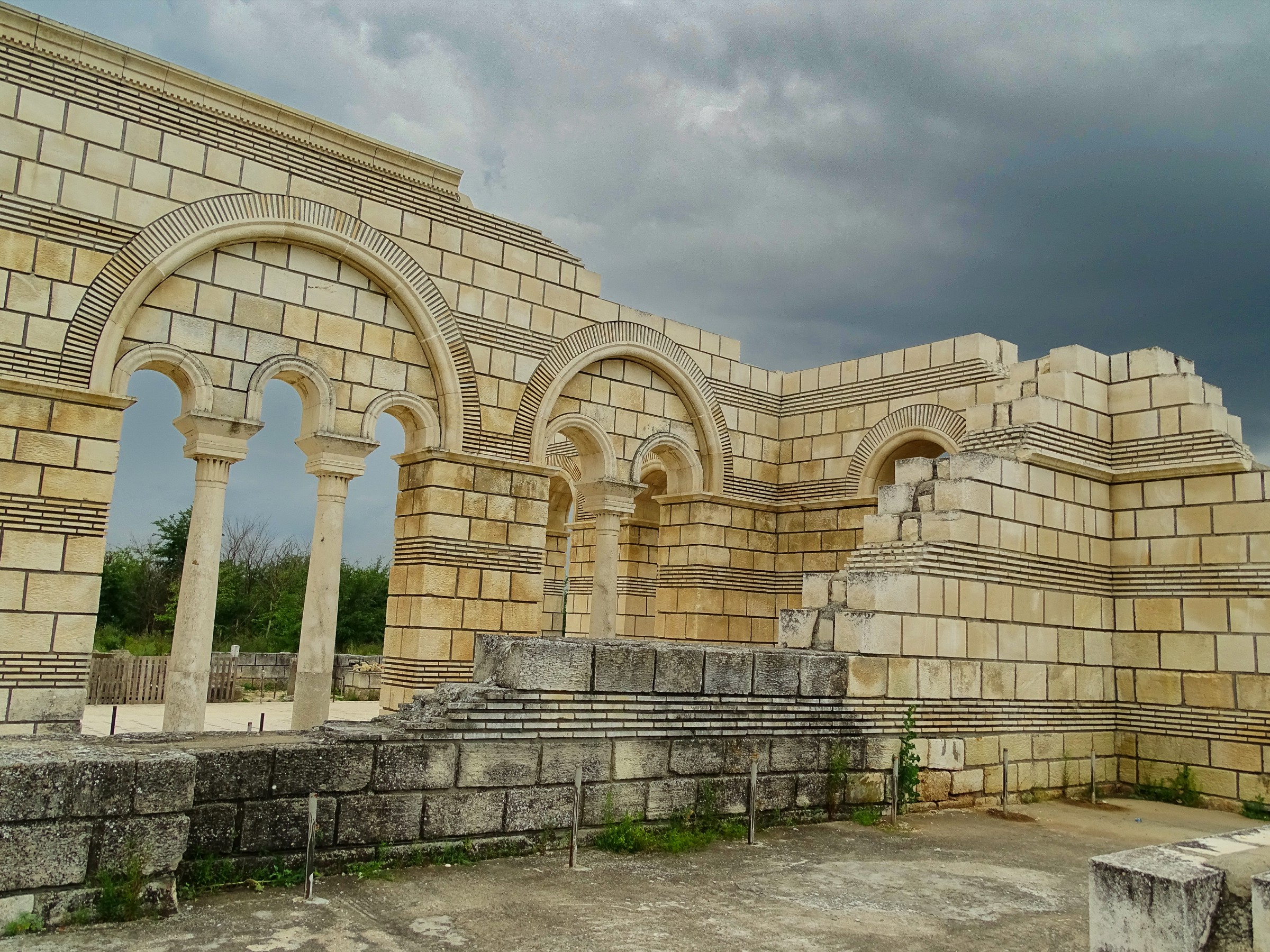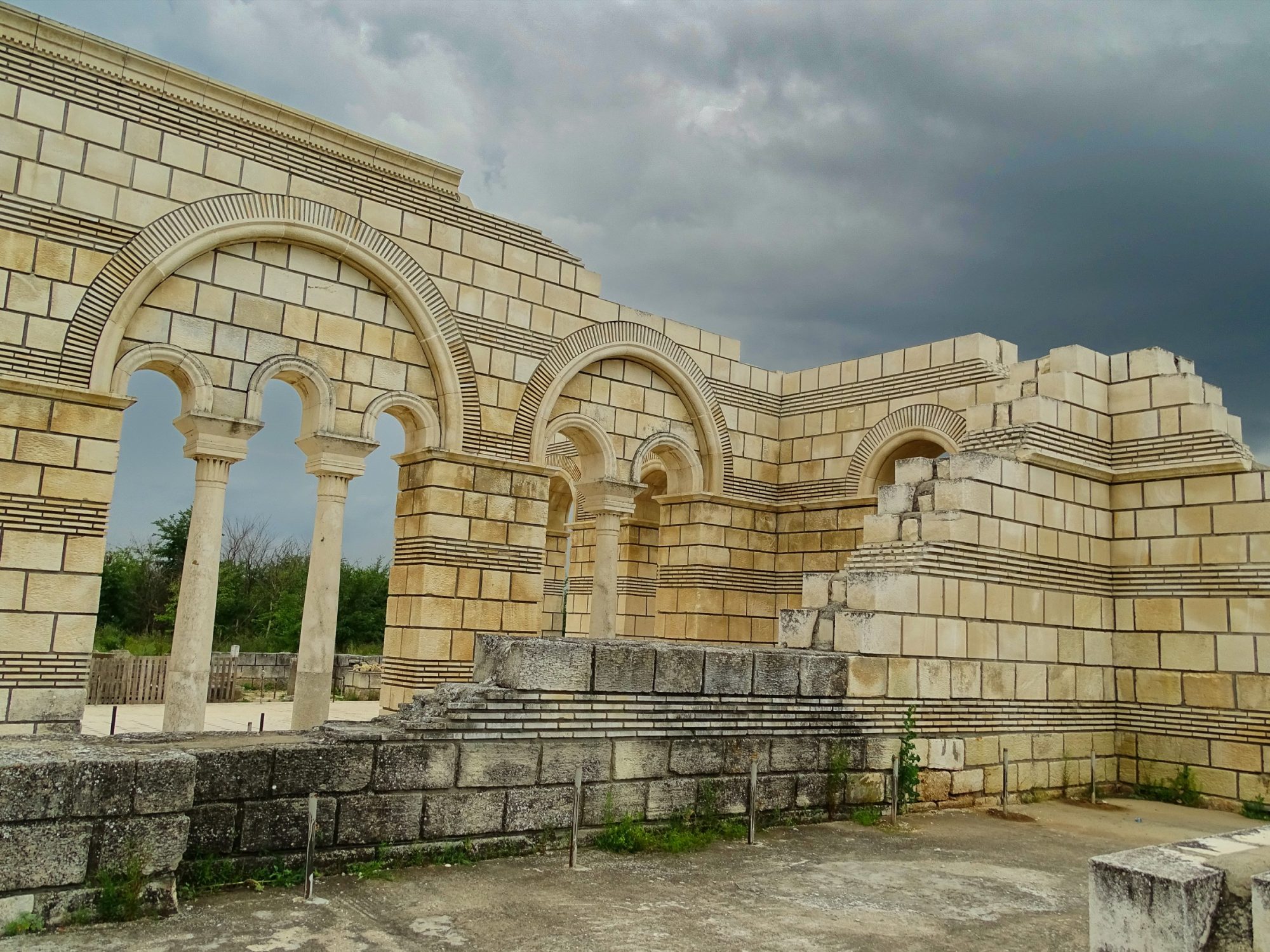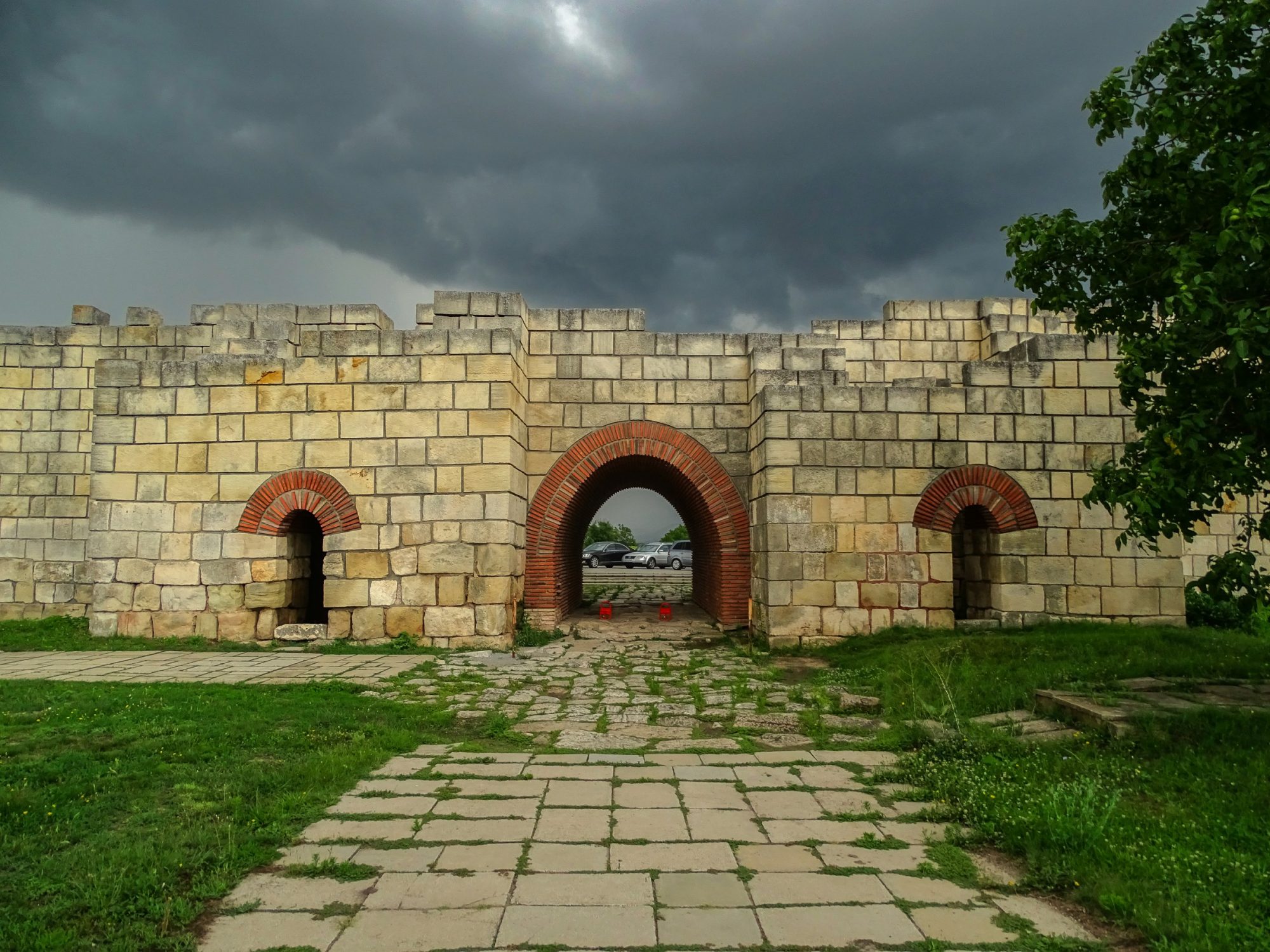




The remains of the first capital of Bulgaria – Pliska, can be visited at the Pliska Historical and Archaelogical Reserve, which is located 25 km from the center of Shumen. The medieval town of Pliska is located on 23- thousand acres area, making it one of the largest medieval towns in Europe. It was founded by the first Bulgarian ruler, Khan Asparuh.
Pliska was the capital of the Bulgarian state for more than two centuries (681–893). The names of 18 Bulgarian rulers are associated with Pliska, including Tervel (700-721), Krum (802-814), Omurtag (814-831), Boris I Mikhail (852-889). The khan’s residence was established at the center of Pliska where the first wooden buildings were erected.
Later, different settlements arose around it, protected by an earthen rampart and a moat. In 811, Pliska was cоnquered by the Byzantine emperor Nikephoros Gennik. After his withdrawal, the wooden buildings were burned. Later, massive stone buildings and high fortress walls were erected at their place.
In the first half of the 9th century, a representative palace, a residential palace, pagan temples and numerous farm buildings were built in Pliska. The Khan’s residence was supplied with water through a complex network of water pipes made of clay, also lead pipes and many baths were built.
Undoubtedly the greatest event associated with Pliska and which changed the fate of Bulgaria was the conversion to Christianity. Numerous Christian churches appeared in and around the residence. Among them was a magnificent cathedral, known as the Great Basilica. Located 1.3 km northeast of the Khan’s residence, it is admired for its large size and rich decoration of mosaics, marble columns, bases and chapiters. The large basilica and the complex of buildings that were erected around it became the center of the Bulgarian Archbishopric from the second half of the 9th century. In 886, the students of Cyril and Methodius were welcomed there, thus laying the foundations of the first Slavic literary school.
Pliska was discovered by the pioneer of Bulgarian archaeology, Karel Shkorpil. The first excavations were carried out in 1899 and continue until today. The discovered remains have been preserved and nowadays form an open-air museum. What visitors can see now are the remains of the fortress walls, the palaces of Krum and Omurtag, the temples of god Tangra, the Great Basilica and many other farm and residential buildings.
For the first time, a museum in Pliska was opened on May 15, 1940, and it was dedicated to the canonized king saint Knyaz Boris-Mikhail. In 2006, the museum building was renovated and expanded. An interesting architectural solution is the inclusion of the southern face of the northern fortress wall in the interior of the exhibition hall. The museum is modernized, and the exhibition hall houses many of the artifacts discovered during more than a hundred years of archaeological research. Arranged chronologically, they define the main religious periods in Pliska – pagan and Christian.
Attempts have been made to restore the two palaces – the palace of Khan Krum (Krumov Palace) and the palace of Khan Omurtag, as well as the main Christian temple – the Great Basilica. Life in the capital city with all its diversity and everyday life, culture and armament can be traced from the exhibits on display. The seals of Knyaz Boris-Mikhail, Tsar Simeon, Peter and Maria, Bishop Nikolay and Archbishop Georgi are symbols of medieval Bulgarian state and the law of religion. The open seal of the Byzantine ruler Basil II testifies to Bulgaria’s contacts with the Byzantine Empire.
The Pliska National Historical and Archaeological Reserve is located 25 km from the city of Shumen and 70 km from the city of Varna. The road is well-maintained and asphalt. The complex has an information center and a pavilion for advertising materials and souvenirs.
The guided tour service covers the entire working hours with talks in Bulgarian, English and German.
Working hours: 08:30 – 19:00 (from 01.04 – 31.10.2025)
Prices:
Regular ticket – 7 BGN / € 3.58
Reduced price for pensioners – 5 BGN / € 2.56
Reduced price for pupils and students – 3 BGN / € 1.53

Useful links
Shoumen Municipality Ministry of Tourism Consumer Protection Commission Regional Historical Museum - Shoumen Vasil Droumev Drama and Puppet Theatre Sinfonietta Shoumen Elena Karamihaylova Art Gallery Anastas Stoyanov Personal Development Support Centre – Municipal Children Complex Stylian Chilingirov Regional Library Arena Shoumen HallTourist Information Center - Shumen Telephone: +359 54 857 773
All rights reserved © 2025г.
Web Design - Dankanic Creative





